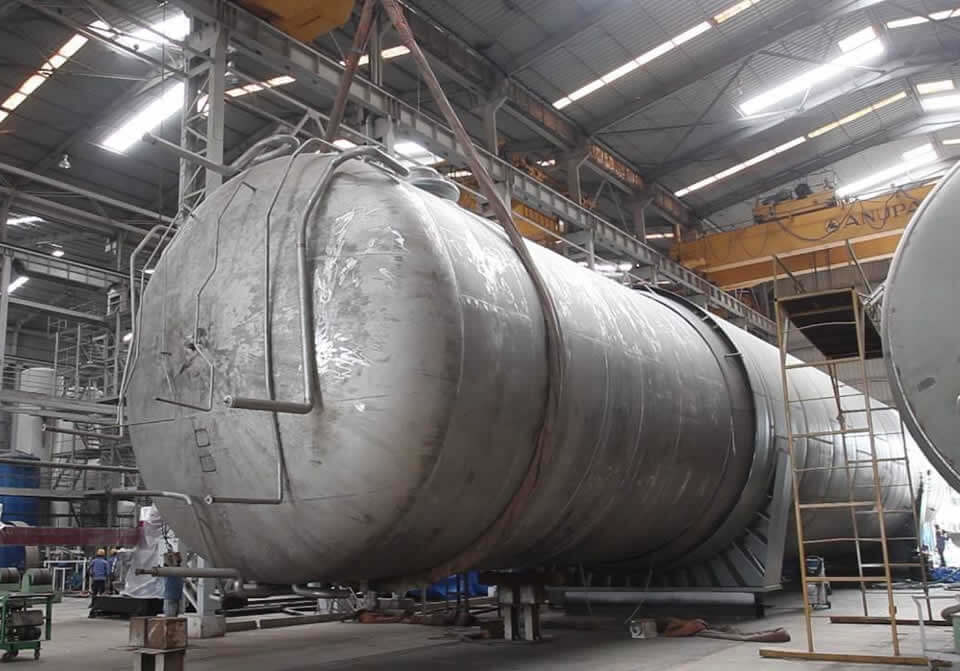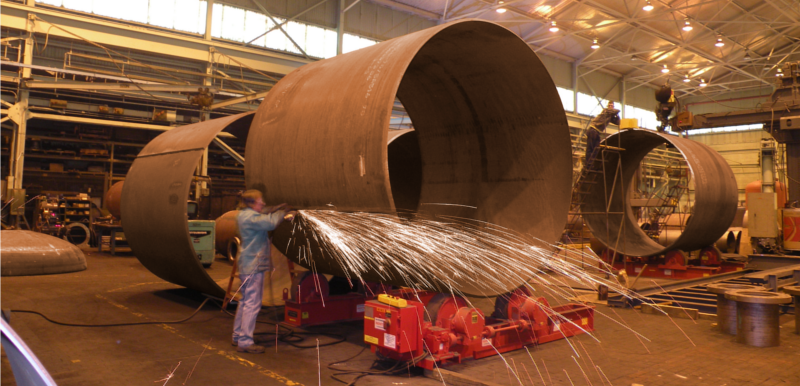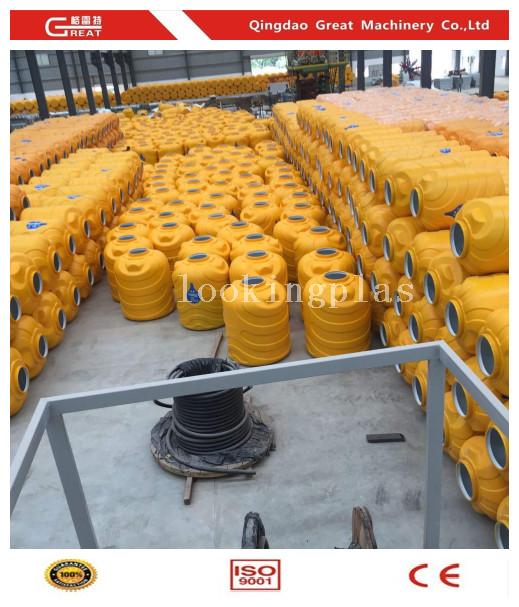How Oil & Gas Storage Tank Fabrication boosts safety and compliance standards
The Future of Storage Tank Manufacturing: Fads and Technologies to View
The storage tank manufacturing field is on the cusp of a pivotal evolution, driven by emerging patterns in smart products, automation, and sustainability. As industries significantly prioritize environmental obligation, advancements such as eco-friendly composites and IoT-driven monitoring systems are improving operational paradigms. Furthermore, the expanding demand for personalization and modular styles suggests a shift in the direction of more versatile manufacturing methods. Comprehending these trends not only highlights the difficulties ahead but likewise discloses opportunities that could redefine the landscape of storage tank production in the coming years. What effects might these advancements hold for industry stakeholders?
Innovations in Smart Products
Over the last few years, the storage tank manufacturing market has witnessed a substantial uptick in the adoption of smart products, revolutionizing style and performance. Smart products, which can react dynamically to ecological modifications, have made it possible for manufacturers to produce tanks that are not only a lot more durable however additionally a lot more efficient in their operational capabilities.
One significant innovation is the integration of shape memory alloys and polymers that can adjust to differing pressures and temperature levels. This flexibility improves the structural integrity of containers, reducing the risk of leaks and failings (Texas Oil & Gas Storage Tank Fabrication Authority). Additionally, these materials frequently exhibit self-healing residential properties, which even more lengthens the life expectancy of storage space containers, minimizing maintenance expenses and boosting safety and security
The consolidation of sensing units within smart materials enables for real-time surveillance of tank conditions, supplying critical data that helps in anticipating maintenance and threat management. This data-driven method not only boosts functional efficiency but likewise lines up with ecological sustainability objectives by maximizing source use and preventing spills.
Rise of Automation Technologies
The increase of automation innovations is transforming storage tank manufacturing by integrating robotics into production processes, improving effectiveness and precision. Furthermore, the implementation of clever sensing units allows real-time surveillance, making certain quality control and safety standards are met. AI-driven process optimization further streamlines operations, reducing costs and boosting total efficiency in the market.
Robotics Combination in Manufacturing
Robotics combination is transforming the manufacturing landscape, specifically in the storage tank field. As manufacturers undertaking for boosted effectiveness and precision, robotics technologies are coming to be essential devices for enhancing production processes. Automated systems can carrying out repetitive jobs with better speed and precision than human labor, lowering the probability of errors and enhancing total product quality.
Among the essential benefits of robotic integration is the capacity to optimize workflows. Automated robotic arms can handle hefty materials, weld parts, and perform evaluations, which reduces physical pressure on workers and reduces downtime. This change not only enhances safety however also permits human employees to concentrate on more complicated and value-added tasks.
In addition, robotics can assist in adaptable manufacturing, making it possible for companies to adjust quickly to transforming market needs - Storage Tank Manufacturing. Advanced programming permits robotics to quickly switch over between various tasks and products, which is particularly valuable in an industry where personalization is significantly desired
As robotics innovation remains to evolve, manufacturers can expect enhanced capacities, consisting of improved device learning formulas and increased truth applications, better driving efficiency in storage tank production and establishing brand-new standards for the industry.
Smart Sensors Implementation

Additionally, the data collected from these sensors can be leveraged to maximize the supply chain, guaranteeing that products are readily available when required while lessening waste. This level of insight enables manufacturers to react swiftly to altering problems and consumer needs, enhancing general performance.
Additionally, wise sensing units add to improved regulatory compliance by constantly ensuring and keeping track of environmental aspects adherence to safety and security criteria. As the sector proceeds in the direction of even more lasting techniques, the capacity to check exhausts and source intake in real-time is important.
AI-Driven Process Optimization
Manufacturers in the storage tank market are progressively taking advantage of the power of AI-driven procedure optimization to improve operational effectiveness and decision-making capabilities. By integrating advanced formulas and equipment understanding strategies, firms can assess huge quantities of information produced throughout the manufacturing process. This data-driven approach enables real-time surveillance of manufacturing metrics, causing even more educated decisions and prompt interventions.
AI technologies promote anticipating maintenance, allowing manufacturers to prepare for devices failures prior to they take place, thus decreasing downtime and maintenance prices. Furthermore, these systems can optimize source allowance by evaluating manufacturing patterns and changing workflows, ensuring that products and labor are utilized effectively.
AI-driven optimization boosts high quality control by recognizing prospective defects during the production process. Automated examinations powered by AI can rapidly spot incongruities, guaranteeing that just items meeting rigorous high quality standards advance with the manufacturing line.
As the storage tank industry continues to welcome automation, AI-driven process optimization sticks out as a transformative force, driving advancement and competitiveness. By leveraging these innovations, manufacturers can not just streamline operations yet also adjust promptly to market demands, positioning themselves for lasting development in an increasingly complicated production landscape.
Concentrate On Sustainability Practices
As the storage tank manufacturing industry progresses, a substantial focus is put on sustainability methods. This includes the fostering of green materials, the implementation of energy-efficient manufacturing procedures, and the combination of round economic situation principles. By prioritizing these initiatives, manufacturers not only decrease their environmental effect however likewise boost the long life and performance of their items.
Eco-friendly Materials Fostering
Significantly, the storage tank production sector is welcoming eco-friendly products as a fundamental facet of sustainability practices. This shift is driven by heightened environmental understanding and regulatory pressures, prompting manufacturers to look for choices that decrease eco-friendly influence.
Eco-friendly compounds and recycled metals are obtaining grip, using both performance and reduced carbon impacts. As an example, utilizing high-recycled-content steel not only reduces the need for virgin products however likewise enhances the total sustainability of the item lifecycle. In addition, manufacturers are discovering bio-based resins that provide toughness while being less hazardous to the environment.
In addition, the adoption of environmentally friendly coverings and finishes, which are complimentary from unstable natural substances (VOCs), reflects the market's commitment to minimizing air pollution and promoting much healthier working conditions. These advancements not just line up with international sustainability goals yet likewise fulfill the growing market demand for greener items.
The integration of environment-friendly materials in storage tank manufacturing is not just a trend; it represents an aggressive approach in the direction of liable production that focuses on both ecological stewardship and economic stability, establishing a new standard for future advancements in the sector.
Energy-efficient Manufacturing Processes
There is an expanding recognition within the storage tank manufacturing industry of the significance of energy-efficient processes as an important component of sustainable methods. As the industry encounters increasing pressure to minimize its carbon footprint, manufacturers are applying innovative modern technologies and approaches focused on lessening power consumption throughout the manufacturing cycle.
One considerable fad is the adoption of sophisticated manufacturing methods such as lean production and automation. These approaches simplify operations, reduce waste, and enhance productivity, while likewise reducing power usage. Furthermore, the integration of sustainable energy resources, such as solar and wind power, into manufacturing centers is ending up being more widespread, permitting companies to run sustainably and decrease dependence on nonrenewable fuel sources.
Energy-efficient equipment and equipment are being prioritized in new investments, as manufacturers look for to enhance their power consumption. Using power monitoring systems allows real-time monitoring and analysis, facilitating continual improvement in energy performance.
Round Economic Climate Assimilation
A noteworthy change towards round economic climate integration is transforming sustainability practices within the storage tank manufacturing field. This approach emphasizes the importance of resource efficiency, waste reduction, and the recycling of materials throughout the production lifecycle. By taking on round concepts, manufacturers are increasingly concentrated on designing containers that focus on long life, recyclability, and repairability.
As component of this change, companies are checking out innovative products and manufacturing methods that minimize environmental effect. The unification of recycled steels and plastics not only decreases the need for virgin resources however also decreases carbon exhausts related to removal and handling. In addition, manufacturers are carrying out take-back systems that help with the repair and recycling of end-of-life tanks, thus shutting the loop in the production cycle.
Collaboration amongst stakeholders, consisting of providers and consumers, is important for promoting a circular economy (Storage Tank Manufacturing). This collaboration enables the sharing of ideal techniques and motivates the growth of sustainable supply chains. Ultimately, integrating round economic climate concepts into storage tank production not just enhances ecological stewardship yet also settings business to fulfill progressing governing standards and customer assumptions for sustainability
Improved Safety Methods
In today's manufacturing landscape, boosted safety methods have come to be critical for storage tank manufacturers. The industry encounters raising governing examination and demands for greater safety criteria as a result of the potential threats connected with the storage space of hazardous products. As a result, manufacturers are adopting a complex technique to boost precaution throughout the manufacturing process.
One substantial growth is the execution of innovative danger evaluation tools that determine possible risks during the style and production stages. These tools promote proactive steps to alleviate dangers before they escalate right into vital concerns. Manufacturers are spending in staff member training programs that highlight security practices, guaranteeing that all workers are skilled in emergency procedures and tools handling.
Furthermore, there is an expanding emphasis on using top quality products and innovative styles that boost structural stability and lower the likelihood of failures or leaks. Routine upkeep checks and rigorous testing methods are also being integrated right into the manufacturing lifecycle to guarantee compliance with safety and security regulations.
Assimilation of IoT Solutions

IoT tools promote predictive upkeep, which minimizes downtime and expands the lifespan of storage containers. By analyzing information collected from sensors, manufacturers can predict potential failures and execute upkeep activities before essential problems develop. This proactive technique not just conserves prices but likewise assures conformity with safety policies.
In addition, IoT assimilation supports better stock monitoring by providing precise, real-time data on kept products. Texas Oil & Gas Storage Tank Fabrication Authority. This capability helps manufacturers maximize their supply chains, ensuring that necessary sources are readily available when required, thus improving overall performance
The execution of IoT options enables enhanced interaction between containers and central management systems, simplifying procedures. As the storage tank manufacturing sector remains to adopt IoT modern technologies, we can expect substantial innovations in security methods and operational efficiencies, eventually resulting in even more durable production methods.
Modification and Modular Style
Flexibility in style has actually ended up being a keystone of contemporary storage tank production as personalization and modular layout options gain grip. The evolving requirements of industries such as oil and gas, chemicals, and water administration necessitate tailored remedies that accommodate certain operational needs. Modification allows manufacturers to produce containers that meet special specifications relating to dimension, material, performance, and form, ensuring peak performance and effectiveness.
Modular style, on the various other hand, enables the assembly of pre-fabricated components, leading to considerable time and price savings. This technique promotes quick deployment and scalability, enabling companies to adapt their storage space abilities in feedback to rising and fall need. Additionally, modular systems can be easily expanded or reconfigured, reducing downtime and enhancing operational flexibility.
The integration of advanced manufacturing technologies, such as 3D printing and computer-aided design (CAD), further enhances modification opportunities. These innovations enable precise design and quick prototyping, enabling quick adjustments and models throughout the style process.

Regulatory Modifications and Compliance
Regulative modifications and conformity demands regularly shape the landscape of storage tank production, engaging manufacturers to stay vigilant and adaptable. With raising environmental worries and the promote sustainable methods, governing bodies are executing more stringent standards worrying emissions, products, and safety and security standards. For example, the united state Environmental Protection Agency (EPA) and different state firms are revising policies that regulate the layout and installment of tank, especially those made use of for unsafe substances.
Manufacturers should not only follow existing guidelines yet additionally prepare for future adjustments, demanding recurring financial investment in r & d. This includes embracing ingenious materials and innovations that improve storage tank stability and environmental security. Compliance with regulations such as the Spill Avoidance, Control, and Countermeasure (SPCC) regulation is critical for manufacturers to stay clear of large fines and lawful responsibilities.
Additionally, the assimilation of electronic technologies facilitates conformity tracking and reporting, making it possible for manufacturers to preserve openness and effectiveness. As regulations proceed to progress, staying educated and positive is vital for storage tank manufacturers to guarantee conformity, protect public health, and secure the atmosphere, ultimately forming an extra lasting sector.
Frequently Asked Questions

What Are one of the most Common Materials Used in Storage Tank Manufacturing?
One of the most common products made use of in storage tank manufacturing include carbon steel, stainless-steel, and fiberglass. Each product offers distinctive advantages, such as sturdiness, deterioration resistance, and versatility to numerous storage needs and environmental conditions.
Exactly How Do Storage Storage Tanks Influence Local Ecosystems Throughout Installment?
Tank installation can interfere with local ecosystems by modifying land use, impacting water drain patterns, and potentially presenting contaminants. Correct site evaluations and ecological management methods are important to reduce these effects and shield biodiversity.
What Is the Average Life Expectancy of a Modern Storage Tank?
The typical life-span of a modern storage tank usually varies from 20 to three decades. Factors such as pop over here material quality, environmental conditions, and maintenance methods substantially affect longevity and total performance throughout their operational lifespan.
Exactly How Do Manufacturers Make Sure Top Quality Control in Production?
Manufacturers assure quality assurance via strenuous screening procedures, adherence to market requirements, and constant monitoring during production (Oil & Gas Storage Tank Fabrication). Advanced innovations such as automation and real-time information evaluation even more enhance consistency and integrity in storage tank production processes
What Are the Costs Connected With Keeping Tank?
Maintaining storage space containers includes various prices, consisting of routine inspections, repairs, governing compliance, corrosion avoidance, and prospective environmental removal. These costs can significantly impact total operational spending plans and demand proactive monitoring to ensure long-term performance and security.
As manufacturers increasingly welcome automation innovations, the release of wise sensors is coming to be a critical facet of contemporary manufacturing processes in the storage tank sector. Manufacturers in the storage container market are increasingly taking advantage of the power of AI-driven process optimization to improve functional effectiveness and decision-making capacities. Progressively, the storage space tank production sector is accepting eco-friendly products as a basic facet of sustainability methods. In today's production landscape, enhanced security methods have actually come to be vital for storage tank manufacturers. Regulative adjustments and compliance requirements often form the landscape of storage tank manufacturing, engaging manufacturers to continue to be adaptable and watchful.